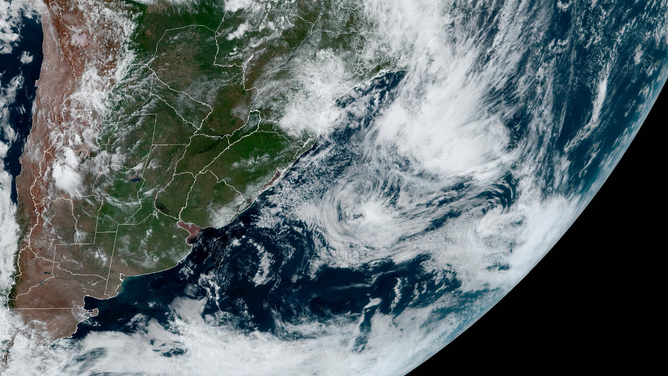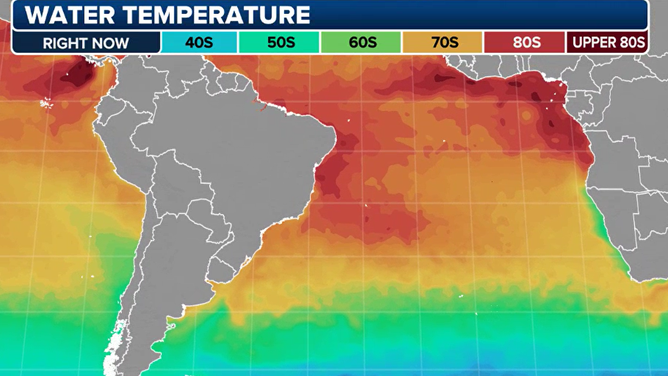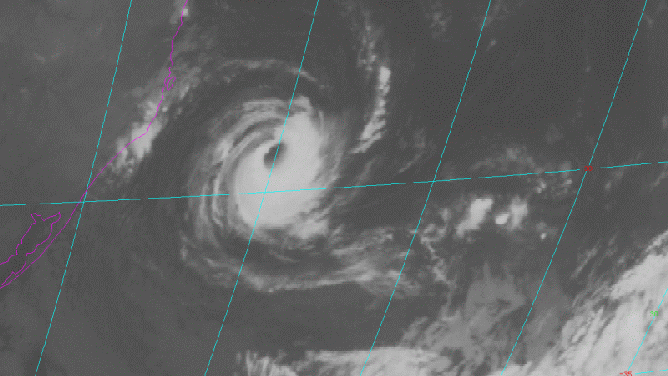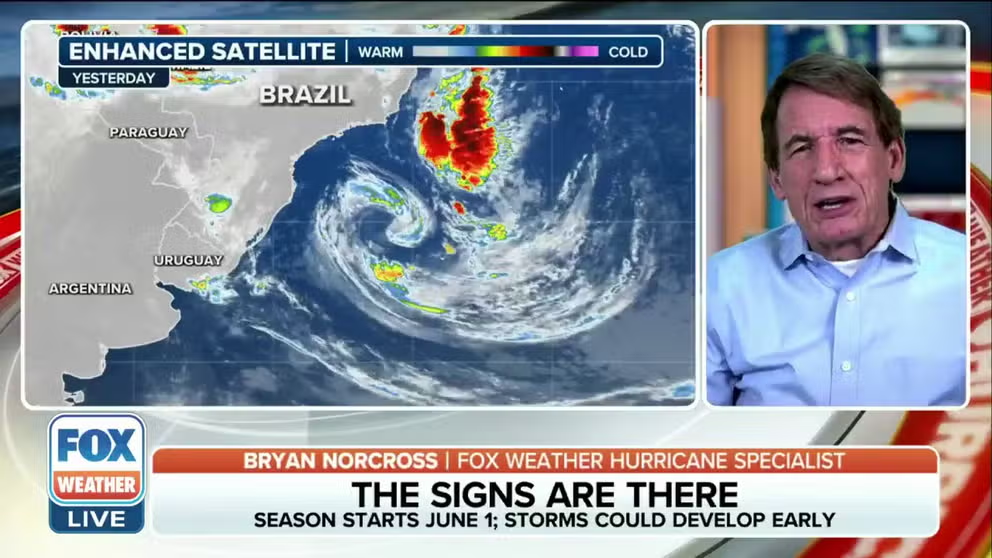Rare tropical storm weakens in South Atlantic off coast of Brazil
The South Atlantic does not have a set hurricane season, but most tropical cyclone activity happens between December and May when the Southern Hemisphere experiences summer and fall.
Unusual February tropical storm in the Atlantic
Hurricane Specialist Bryan Norcross explains why it is so unusual to find a tropical storm off the coast of Brazil in February.
BRASÍLIA, Brazil – Forecasters are tracking a weakening Akará off the coast of South America, which became a rare tropical storm on Monday in a part of the Atlantic Ocean that is usually void of tropical cyclone activity.
The Brazilian Navy reported on Tuesday the storm had weakened into a tropical depression and was expected to degenerate into a remnant area of low pressure on Wednesday. The system is about 450 miles off the coast of Florianópolis, Brazil.
The system brought heavy rain to parts of South America before pushing offshore, and because of its trajectory, the system is not a threat to the mainland. The Brazilian Navy and the Brazilian National Institute of Meteorology said waves reached upwards of 16 feet, and winds were near 50 mph over the South Atlantic.

A tropical depression seen by NOAA's GOES East satellite in the South Atlantic off the coast of Brazil on Feb. 21, 2024.
(NOAA)
Ocean temperatures are plenty warm to support tropical cyclone activity, but upper-level winds are usually too hostile to support significant ones in the South Atlantic.
Akará was the first named system in the South Atlantic Basin since 2022. The last named system to form in this region was Subtropical Storm Yakecan.
Water temperatures were estimated to be in the lower to mid-80s, which was sufficient to support tropical cyclone activity.
As the cyclone spins in the ocean clockwise – the opposite of a Northern Hemisphere hurricane due to the Coriolis effect – it is not expected to threaten any land areas.
WILL 2024 ATLANTIC HURRICANE SEASON BE ACTIVE? ONE EARLY FORECAST SAYS YES

South Atlantic water temperatures.
(FOX Weather)
Hurricanes in the South Atlantic are extremely rare, and according to NOAA, there has been only one occasion of a hurricane off the coast of South America during the modern satellite era. Hurricane Catarina made landfall in southern Brazil as a Category 1 storm on March 27, 2004.
5 DIFFERENT NAMES FOR HURRICANES AROUND THE WORLD

A satellite loop of Hurricane Catarina in 2004.
(NOAA)
Tropical cyclone naming process
Unlike other basins across the globe that are regulated by the World Meteorological Organization, the South Atlantic is unique as no single agency monitors the entire basin.
Over the last decades, the Brazilian Navy Hydrographic Center has developed a naming list that is used year-round to identify cyclones that are south of the equator and west of longitude 20 degrees west.
Prior to Akará, the last name that was used from the list was Yakecan in 2022. The subtropical cyclone formed off the coasts of Brazil and Uruguay before turning away from land and heading out into the open South Atlantic.
There are currently 31 unused names on the list produced by the Brazilian Navy Hydrographic Center.

A list of South Atlantic tropical cyclone names.
(FOX Weather)
A cyclone is usually given a name when it has sustained winds of at least 40 mph, much like tropical cyclones in the North Atlantic and Pacific oceans.
Unlike basins monitored by the National Hurricane Center, the South Atlantic does not have a tropical cyclone season, meaning tropical depressions, tropical storms and hurricanes form year-round.
Most tropical cyclone activity happens between December and May when the Southern Hemisphere is in its summer and fall.
